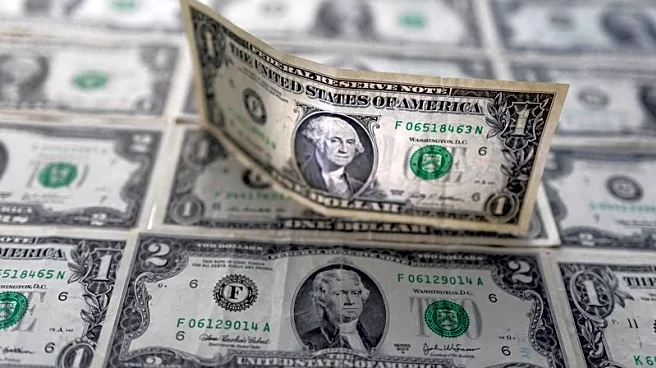What's Happening?
The U.S. Federal Reserve injected $29.4 billion into the banking system to address liquidity concerns and support risk assets, including bitcoin. This operation, conducted via the standing repo facility (SRF), aimed to temporarily boost cash available
with primary dealers and banks. The move was designed to add short-term liquidity into the system, lower repo rates back toward normal levels, and prevent a sudden freeze in short-term funding markets. This action comes as bank reserves slipped to $2.8 trillion, causing an increase in repo rates due to a scarcity of lendable cash. The liquidity injection is a response to the tightening caused by the Fed's quantitative tightening and the Treasury's decision to increase its checking account at the Fed.
Why It's Important?
The Federal Reserve's liquidity injection is significant as it helps prevent potential liquidity crises that could negatively impact financial markets. By temporarily expanding bank reserves and lowering short-term rates, the Fed's action eases borrowing pressures, which is supportive of risk assets like bitcoin. This move is crucial in maintaining market stability and ensuring that banks have the necessary reserves to meet regulatory requirements and conduct daily operations. While the action does not equate to quantitative easing, it provides a short-term solution to liquidity stress, highlighting the Fed's role in managing financial stability.
What's Next?
If system-wide reserves remain scarce, the Federal Reserve may need to take more aggressive action. This could involve further liquidity injections or adjustments to the SRF. However, experts like Andy Constan suggest that the current situation may resolve itself without additional intervention. If the liquidity stress persists, the Fed might have to keep rates elevated and expand the SRF. The financial markets will closely monitor the Fed's next steps to gauge the potential impact on risk assets and overall market stability.














